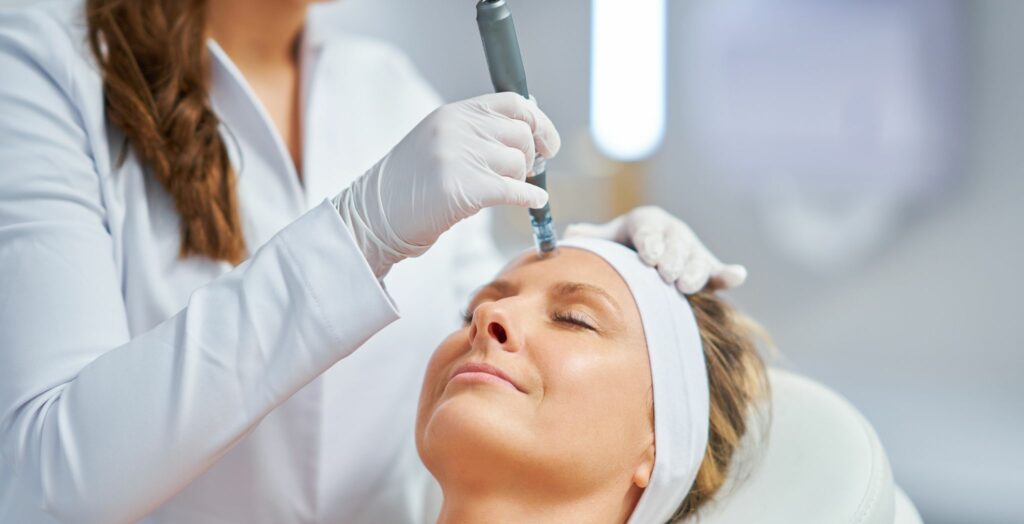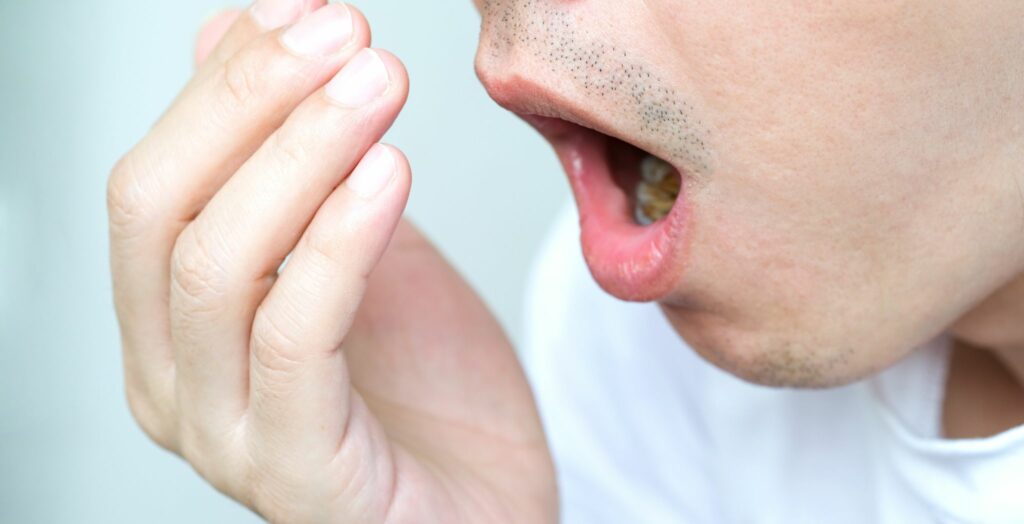Imagine finally getting a full night’s sleep, feeling refreshed and ready to tackle the day. For many, this simple pleasure is disrupted by a common yet serious condition called sleep apnea. But there’s good news! One of the most effective and non-invasive solutions is a mouth guard for sleep apnea.
Let’s dive into what sleep apnea is, how a mouth guard can help, and explore your options for achieving that restful sleep you deserve.
What is Sleep Apnea?
Sleep apnea is a sleep disorder where your breathing repeatedly stops and starts during sleep. These pauses in breathing can last for a few seconds to even a minute or longer and can happen many times throughout the night. This disruption in breathing leads to a drop in oxygen levels in your blood, signalling your brain to wake you up briefly to restart breathing. Often, these awakenings are so brief that you don’t even remember them in the morning.
There are two main types of sleep apnea:
- Obstructive Sleep Apnea (OSA): This is the most common type. It occurs when the muscles in the back of your throat relax, causing the airway to narrow or close. Think of it like a blocked pipe – air can’t flow freely.
- Central Sleep Apnea (CSA): This type is less common and involves a problem with the brain’s signals to the muscles that control breathing. The brain simply doesn’t tell your body to breathe regularly.
Regardless of the type, sleep apnea can have significant consequences for your health and well-being.
Common Symptoms of Sleep Apnea:
- Loud snoring (often with gasping or choking sounds)
- Daytime sleepiness and fatigue
- Difficulty concentrating
- Morning headaches
- Irritability
- Dry mouth or sore throat upon waking
- Frequent nighttime urination
- Witnessed pauses in breathing during sleep by a partner
If you experience any of these symptoms, it’s essential to seek medical advice. Untreated sleep apnea can lead to serious health problems, including high blood pressure, heart disease, stroke, type 2 diabetes, and even accidents due to excessive daytime sleepiness.
How a Mouth Guard Helps with Sleep Apnea
This is where the mouth guard, also known as an oral appliance, comes into play, particularly for obstructive sleep apnea. These custom-fitted devices are designed to keep your airway open during sleep. They work by gently repositioning your lower jaw, tongue, and sometimes even your palate (the roof of your mouth).
Think of it this way: when you sleep, your throat muscles relax. For some people, this relaxation causes the tongue to fall back into the throat or the lower jaw to slide backward, obstructing the flow of air. A mouthguard prevents this from happening by:
- Moving the lower jaw forward: This forward movement pulls the tongue away from the back of the throat, creating more space for air to pass through.
- Stabilising the tongue: Some mouth guards are designed to hold the tongue in a forward position, preventing it from blocking the airway.
- Lifting the soft palate: Certain appliances can lift the soft palate slightly, reducing the chances of vibrating and obstructing airflow.
By keeping the airway open, a mouth guard can significantly reduce or even eliminate the pauses in breathing associated with sleep apnea. This leads to better oxygen levels throughout the night, improved sleep quality, and reduced associated symptoms like snoring and daytime sleepiness.
Mouth Guard for Sleep Apnea: Top Treatment Options
When it comes to mouth guards for sleep apnea, there isn’t a one-size-fits-all solution. The best option for you depends on the severity of your sleep apnea, your anatomy, and your dentist’s recommendations. Here are some of the common types of oral appliances:
- Mandibular Advancement Devices (MADs): These are the most common mouthguards for OSA. They work by gently pushing your lower jaw forward. MADs typically consist of two pieces, one for the upper teeth and one for the lower teeth, that are connected in a way that allows for controlled forward movement of the mandible. They are often adjustable, allowing your dentist to fine-tune the position for optimal airway opening.
- Tongue Retaining Devices (TRDs): These devices focus on preventing the tongue from falling back and blocking the airway. A TRD usually features a splint that fits around your teeth and a bulb that holds your tongue forward using gentle suction. TRDs are often considered for individuals whose primary airway obstruction is due to the tongue.
- Palatal Lift Appliances: These are less commonly used for sleep apnea and are more often employed to address issues with the soft palate, such as velopharyngeal insufficiency. However, in some cases, they might be considered to lift and stabilise the soft palate, thereby widening the airway.
It’s crucial to understand that over-the-counter or boil-and-bite mouth guards marketed for snoring may not be effective for treating sleep apnea and could even worsen the condition. A custom-fitted mouth guard prescribed and fitted by a qualified dentist cranebrook specialising in sleep medicine is essential for effective sleep apnea treatment.
Choosing the Right Mouth Guard for Sleep Apnea
The process of getting the right mouth guard for sleep apnea typically involves the following steps:
- Consultation with a Doctor: If you suspect you have sleep apnea, the first step is to consult your primary care physician or a sleep specialist. They will likely recommend a sleep study (polysomnography) to diagnose the condition and determine its severity.
- Referral to a Sleep Dentist: Once diagnosed with sleep apnea, your doctor may refer you to a dentist with expertise in sleep medicine. These dentists have specialised knowledge in oral appliance therapy.
- Comprehensive Dental Evaluation: The sleep dentist will conduct a thorough examination of your teeth, gums, jaw, and bite. This evaluation helps determine if you are a suitable candidate for oral appliance therapy and which type of appliance might be best for you.
- Custom Impression and Fabrication: If a mouth guard is deemed appropriate, the dentist will take precise impressions of your upper and lower teeth. These impressions are then used to create a custom-fitted appliance that comfortably and effectively repositions your jaw or tongue.
- Fitting and Adjustment: Once the custom mouth guard is ready, you’ll return to the dentist for a fitting. The dentist will ensure the appliance fits correctly and comfortably. They will also provide instructions on how to insert, remove, and care for your mouth guard. Follow-up appointments are crucial for adjustments to ensure optimal effectiveness and comfort.
Factors your dentist will consider when recommending a mouth guard include:
- The severity of your sleep apnea: Mild to moderate OSA often responds well to oral appliance therapy.
- Your dental health: Healthy teeth and gums are essential for proper appliance fit and retention.
- Your jaw structure and bite: Certain jaw alignments may make some appliances more suitable.
- Your comfort level: The appliance needs to be comfortable enough for you to wear consistently throughout the night.
Care and Maintenance of Your Mouth Guard
Proper care and maintenance of your sleep apnea mouth guard are crucial for its effectiveness, longevity, and oral health. Here are some essential tips:
- Clean your mouth guard daily: Rinse it thoroughly with cool water to remove saliva and debris after each use. You can also use a mild soap or a specialised denture cleaner as recommended by your dentist. Avoid using hot water, as it can warp the material.
- Brush your mouth guard: Gently brush your mouth guard with a soft toothbrush and toothpaste, just like you brush your natural teeth.
- Store your mouth guard properly: When not in use, store your mouth guard in a clean, dry case provided by your dentist. This protects it from damage and keeps it hygienic.
- Avoid harsh chemicals: Don’t use bleach or other harsh chemicals to clean your mouth guard, as they can damage the material and be harmful if residue remains.
- Handle with care: Be gentle when inserting and removing your mouth guard to avoid bending or breaking it.
- Schedule regular dental checkups: Bring your mouthguard to your regular dental appointments so your dentist can check its fit and condition.
- Follow your dentist’s instructions: Your dentists penrith nsw will provide specific instructions for caring for your particular type of mouth guard. Adhere to these guidelines for the best results.
When to See a Doctor for Sleep Apnea
It’s crucial to seek medical attention if you suspect you have sleep apnea. Don’t try to self-diagnose or treat the condition with over-the-counter snoring devices. Consult your doctor if you experience any of the symptoms mentioned earlier, such as loud snoring, daytime sleepiness, or witnessed breathing pauses.
A proper diagnosis through a sleep study is essential to determine the severity of your sleep apnea and the most appropriate treatment plan. While a mouth guard can be an effective solution for many, other treatments like Continuous Positive Airway Pressure (CPAP) therapy might be necessary for more severe cases. Your doctor and a sleep specialist can help you determine the best course of action for your individual needs.
Preventing Sleep Apnea
While not all cases of sleep apnea are preventable, certain lifestyle modifications can reduce your risk or lessen the severity of the condition:
- Maintain a healthy weight: Obesity is a significant risk factor for obstructive sleep apnea. Losing even a small amount of weight can improve symptoms.
- Avoid alcohol and sedatives, especially before bed: These substances can relax the throat muscles, making airway obstruction more likely.
- Quit smoking: Smoking irritates the airways and can worsen sleep apnea.
- Sleep on your side: Sleeping on your back can cause the tongue and soft palate to fall back and obstruct the airway.
- Manage nasal congestion: Allergies or sinus issues can contribute to snoring and potentially worsen sleep apnea. Treat nasal congestion effectively.
- Regular exercise: Physical activity can improve overall health and potentially reduce the severity of sleep apnea.
While these preventive measures can be helpful, they may not be sufficient to treat existing sleep apnea. If you have been diagnosed with the condition, following your doctor’s recommended treatment plan, which may include a mouth guard, CPAP therapy, or other interventions, is crucial.
Conclusion
Sleep apnea is a serious condition that can significantly impact your sleep quality, overall health, and daily life. Fortunately, effective solutions are available, and a custom-fitted mouth guard for sleep apnea offers a non-invasive and often highly successful treatment option, particularly for obstructive sleep apnea. By gently repositioning your jaw and tongue, these oral appliances can keep your airway open, allowing you to breathe freely and enjoy the restorative sleep you need.
If you suspect you have sleep apnea or have been diagnosed with the condition and are looking for alternative or complementary treatments to CPAP, talk to your doctor or a qualified sleep dentist. They can evaluate your individual needs and determine if a mouth guard is the right path towards better sleep, improved health, and a brighter, more energetic tomorrow. Don’t let sleep apnea control your life – explore the possibilities of a mouth guard and take the first step towards a restful night and a healthier you.



